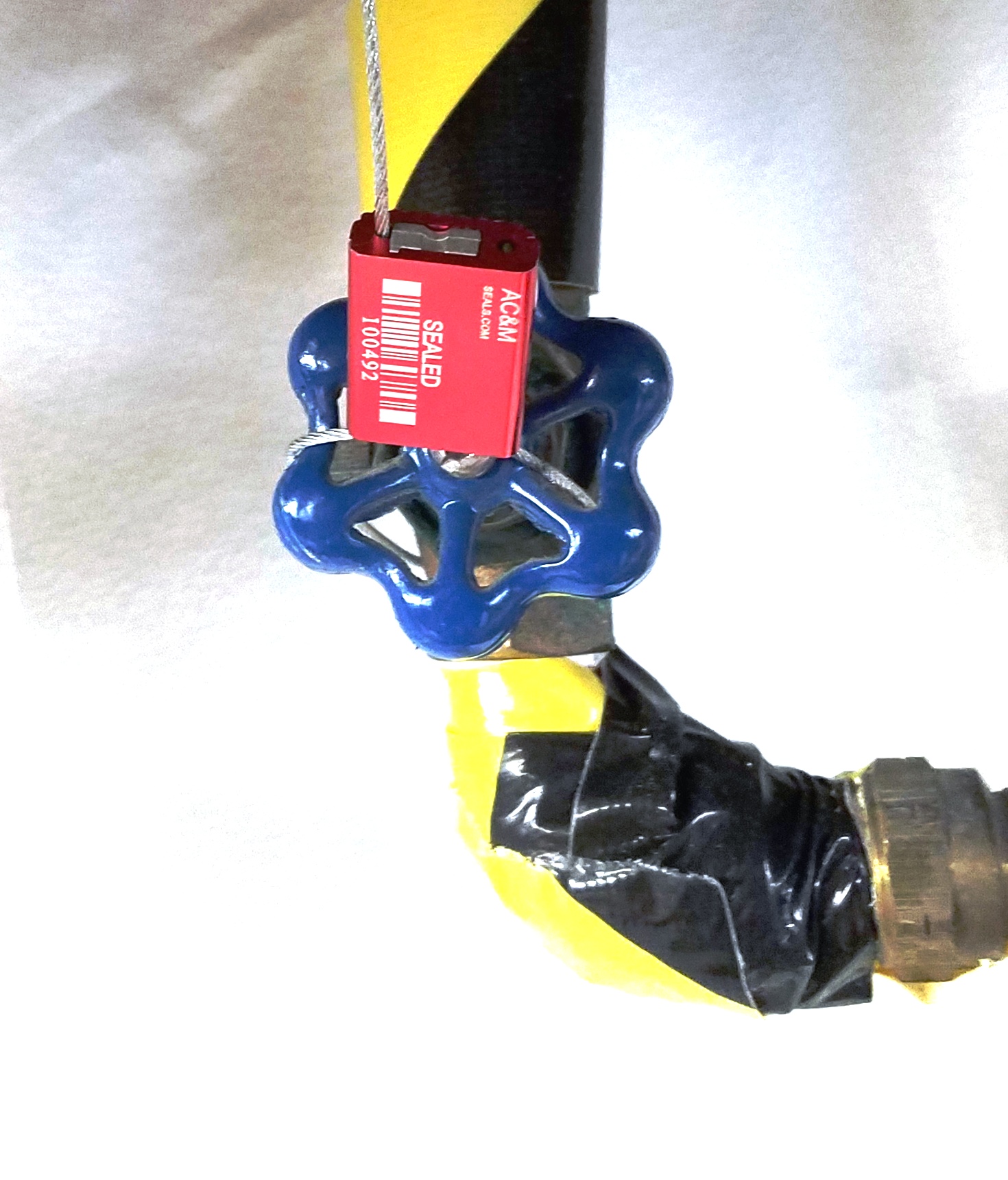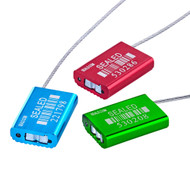THE IMPORTANCE OF SECURITY SEALS FOR VALVES & THE RIGHT SEALS FOR THE JOB
Posted by AC&M
In numerous industries, valves are sealed for safety, quality, cost control, and operational reasons. The seals are primarily used to confirm that a valve is in either a closed or opened position (LC =locked closed or LO=Locked open). But there are many other purposes seals serve.
The number of valve types, purposes for a seal, and the seal types used are limitless. Though some valves present unique challenges to finding an effective seal that fits, AC&M produces over 100 different tamper evident sealing devices, and variations. All are used, or can be used to seal one type of valve or another. We meet challenges in valve sealing and have done so worldwide for much of our 110 year history.
COMMON SEAL APPLICATIONS FOR VALVES
Manufacturing and processing systems in petroleum, chemical, food and beverage, pharmaceutical, plus power plants, and water/sewer plants have thousands of valves in use. These valves control ingredients, coolants, mixing, transfer, loading and filling of finished product and more – for both liquids and gasses.
Some applications are long term and some can require daily seal changes. A typical refinery can use thousands of seals in a year just to maintain internal valve operations. Food processors can use many more, and in both cases, this does not include seals on tank trucks entering and leaving the facility.
Water that enters a commercial building for operational needs, sanitary use, drinking, cooling, and fire protection passes through valves that are often sealed, to deter unauthorized opening or closing. The same is true for valves controlling intake and outflow of ingredients or finished products.
The valves that control product flow within the facility are also sealed. Sometimes it is for assurance of the open or closed valve position, but often it’s to identify what is coming through the line. Seals can be color coded and marked to provide information about the valve it is on. Most can be printed with safety information, barcoding or other data as a producer may require. There are also seals that allow the user to write dates, times, their identity, or other details on the seal for manual control functions. Additionally, users might add a tag to the seal to provide even more detail.
The other major use of tamper evident seals on valves is in transport. Tank trucks, rail tankers, and long distance pipelines have valves that are sealed.

CHOOSING THE RIGHT SEAL FOR VALVES
Valve types vary, and the typical valve in a production facility or plant can range in size from very small to iron giants with handles of 1 meter or more in diameter. Many have unique placement and handle configurations which require a very flexible seal, both in length and bending capability.
Wire seals and cable seals are often the best options as they can be easily pulled through a handle and then around a valve body, pipe or fixture. Wire seals have almost unlimited length options. However, strap seals can be used in many areas where the fit is right.
There are no fixed rules on which seal is best. The user needs to consider strength requirements, size, working environment, length of time it will be in use and any potential exposure to damaging chemicals. Also, it is important to consider the markings required and any color or coding needs. The budget is also a key factor in making a choice.
If the use is in an area where physical damage is possible or where strength is needed cable seals are the choice. AC&M has many options in cable seals, wire seals, and plastic seals.
Sometimes the shape of a valve has no opening for a typical mechanical seal, but an adhesive security tape or label could be a solution.
For valves on transport vehicles including tank trucks and rail tankers there are other considerations. Tank trucks for short hauling and those carrying less sensitive commodities often use simple plastic pull up seals for their discharge and filling valves. The typical tank truck or rail tanker has a provision for a seal on the valve or the box covering the valve, so adjustable strap seals will work. Often the choice depends on the diameter of the seal opening. Meanwhile, trucks hauling fuels and high risk/high value products are sealed with heavy duty seals, usually cable seals. Within the AC&M line is most likely a seal that will fit the job.
CONTACT US
We invite you to ask any questions or relate your needs regarding tamper evident seals for valves -- or any purpose.
AC&M serves thousands of seal users including government, utility, military, and commercial entities of all types worldwide. We invite you to utilize and benefit from our 110 years in the seal industry, and a wealth of expertise. We are glad to assist with guidance, samples or pricing at your request.
An experienced seal applications expert is available any time during business hours. Contact us at our main office and factory: Email: info@seals.com Call toll-free at 1-800-342-0333 in the US or 516-349-7010 from anywhere.
Or see our website www.seals.com for all locations and contact information.

